lpm and npiv
This post will cover the specifics about NPIV technology when using Live Partition Mobility.
NPIV
overview
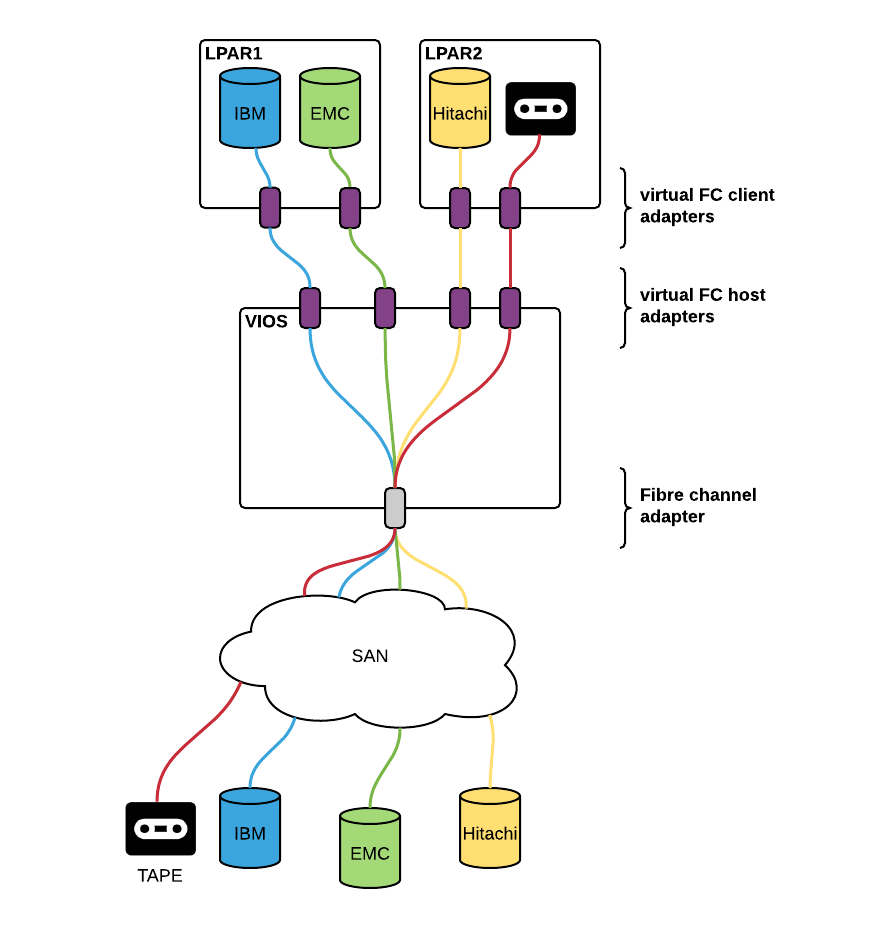
NPIV: N_Port ID Virtualization.
It’s a Fibre Channel hardware feature. Multiple Fibre Channel node port IDs can share a single physical N_Port.
Each client partition has dedicated wwpns.
Disk drivers are installed at lpar level.
Load balancing available at lpar level.
Easiest virtualization solution for lan free backup.
Most popular disk virtualization technology on Power systems.
typical configuration
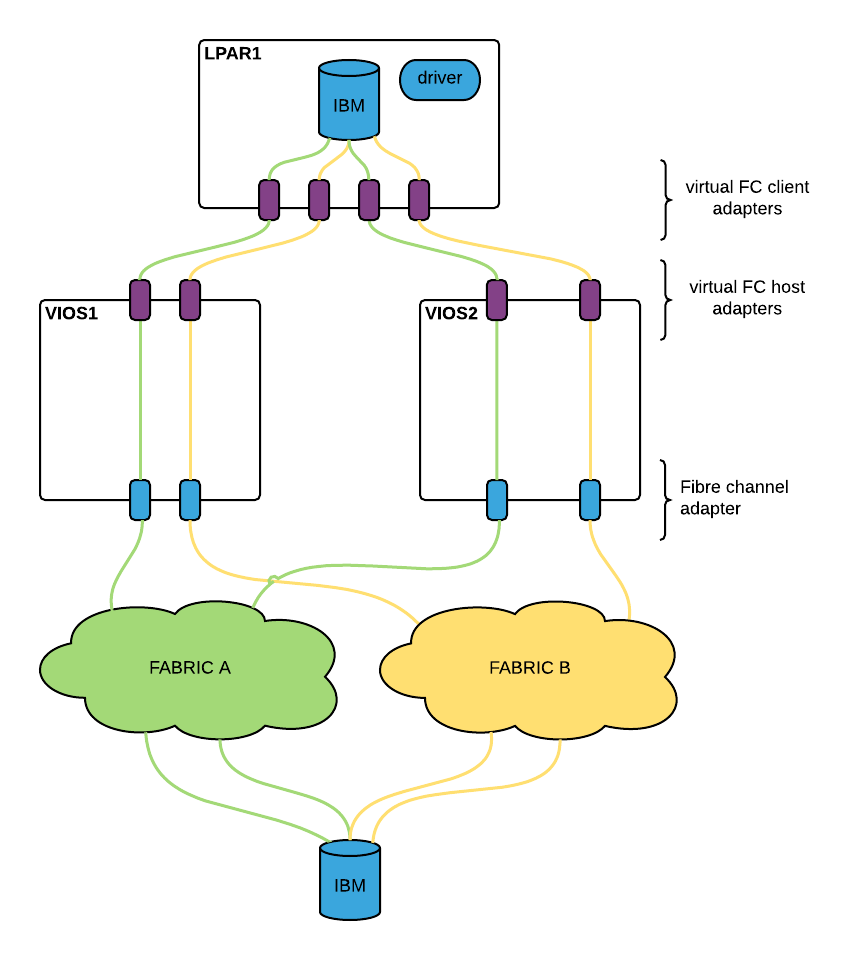
The disk driver is installed at partition level.
Disk paths load balancing is performed at partition level.
Most common setup is 4 paths. It allows to access each fabric from each VIOS.
active and inactive wwpns
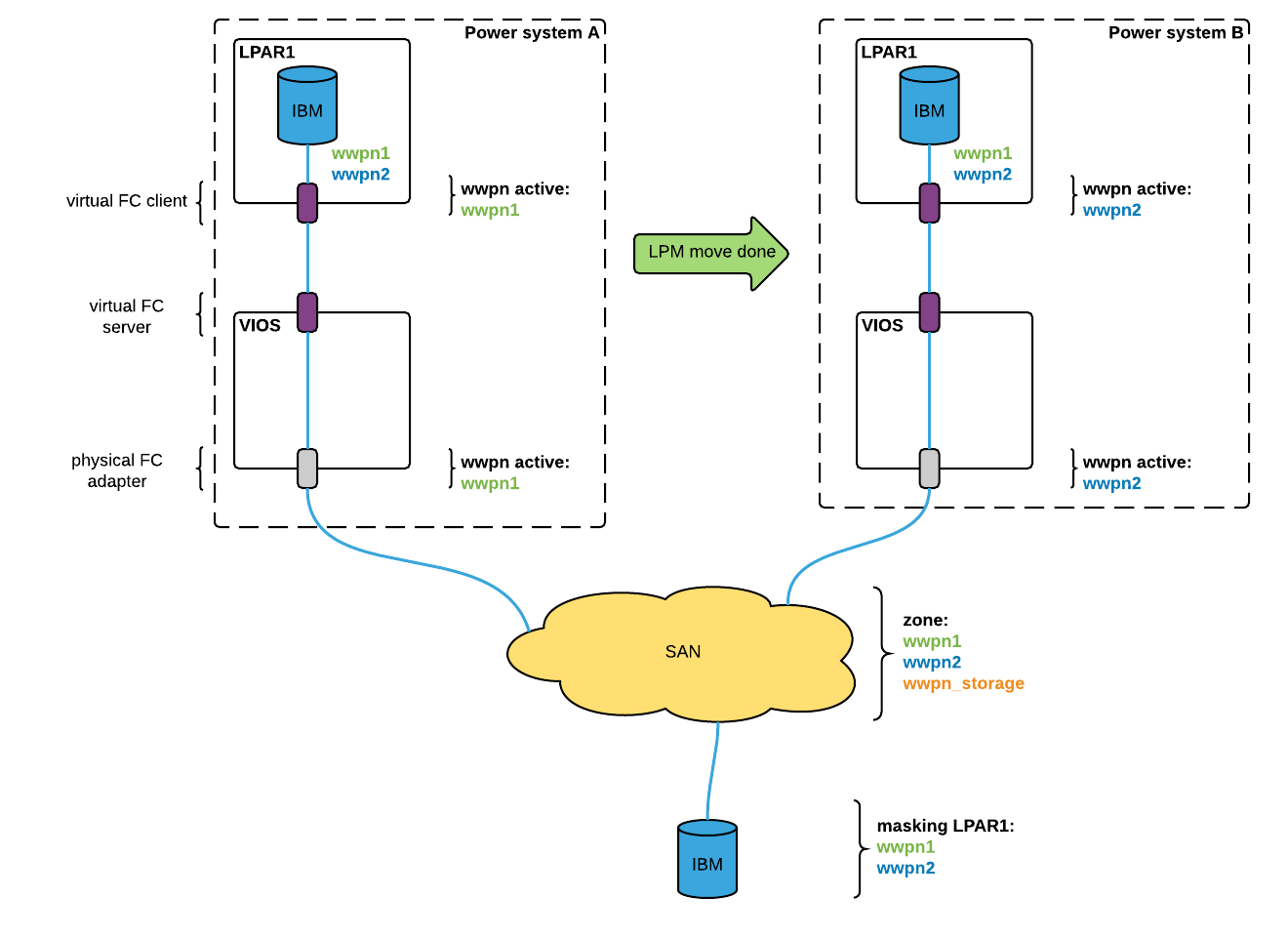 Each virtual fibre channel adapter has 2 wwpns. Only one is active at one time.
Each virtual fibre channel adapter has 2 wwpns. Only one is active at one time.
When an active LPM operation is performed, the fibre channel adapter will use the inactive wwpn on the destination system. It will keep using it after the operation.
Zoning by WWPN is recommended. See Brocade reference documentation :
When using lscfg command, you will only see the first wwpn on the virtual fibre channel adapter.
# lscfg -vl fcs0
fcs0 U8286.42A.06B7D12-V10-C4-T1 Virtual Fibre Channel Client Adapter
Network Address.............C0507607A2550166
ROS Level and ID............
Device Specific.(Z0)........
Device Specific.(Z1)........
Device Specific.(Z2)........
Device Specific.(Z3)........
Device Specific.(Z4)........
Device Specific.(Z5)........
Device Specific.(Z6)........
Device Specific.(Z7)........
Device Specific.(Z8)........C0507607A2550166
Device Specific.(Z9)........
Hardware Location Code......U8286.42A.06B7D12-V10-C4-T1Here it’s C0507607A2550166.
To see what is the current active wwpn, you need to use fcstat command:
# fcstat fcs0
FIBRE CHANNEL STATISTICS REPORT: fcs0
Device Type: FC Adapter (adapter/vdevice/IBM,vfc-client)
Serial Number: UNKNOWN
Option ROM Version: UNKNOWN
ZA: UNKNOWN
World Wide Node Name: 0xC0507607A2550167
World Wide Port Name: 0xC0507607A2550167
FC-4 TYPES:
Supported: 0x0000010000000000000000000000000000000000000000000000000000000000
Active: 0x0000010000000000000000000000000000000000000000000000000000000000
Class of Service: 3
Port Speed (supported): UNKNOWN
Port Speed (running): 8 GBIT
Port FC ID: 0x01086FHere an active LPM operation occured, so it’s C0507607A2550167.
valid zoning and masking configuration
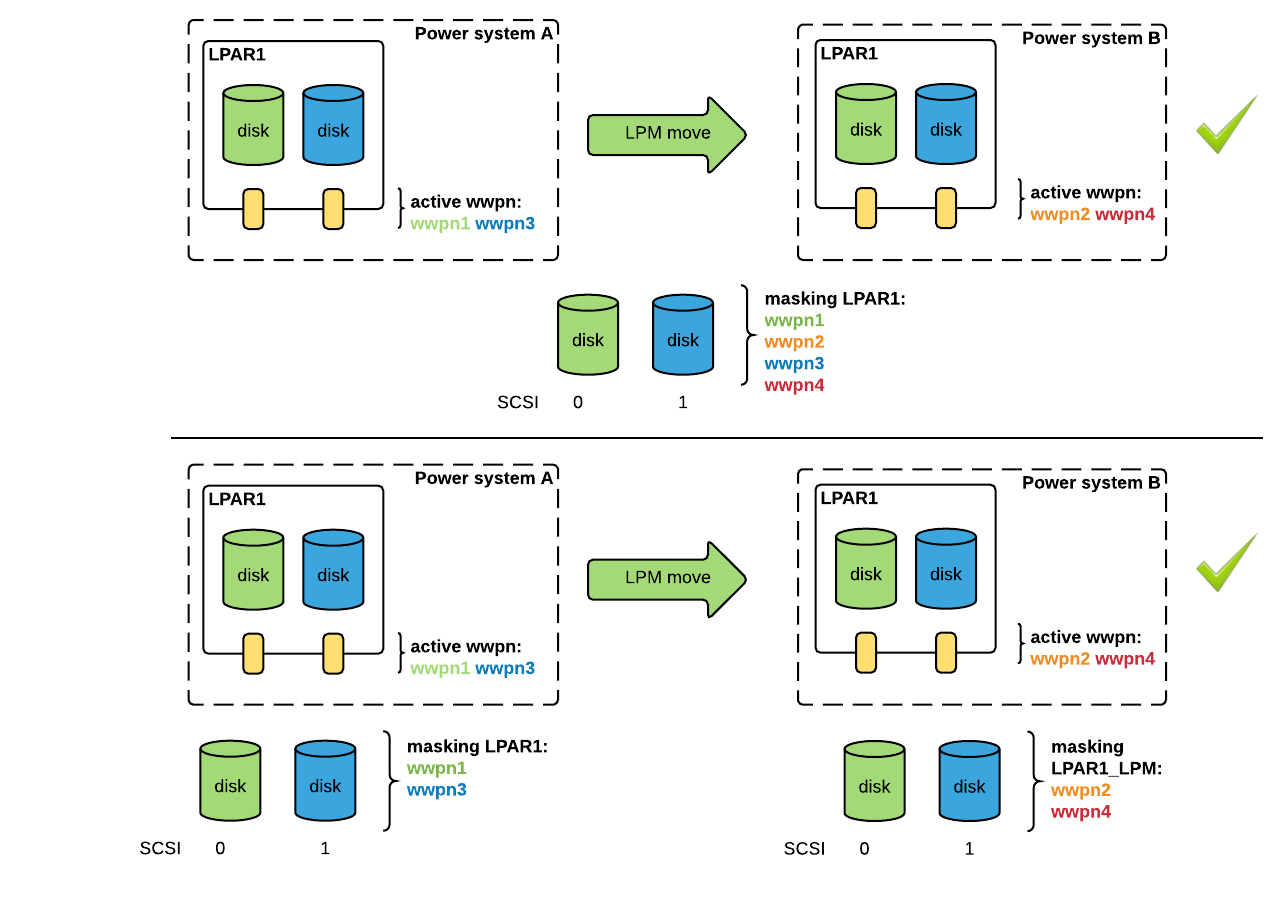
To perform LPM correctly, both active and inactive wwpns needs to be zoned and masked to the appropriate storage.
2 solutions are available:
one host defined at storage level with all wwpns
2 hosts defined at storage level: one with active wwpns, one with inactive wwpns.
If done properly, both solutions are valid.
possible errors
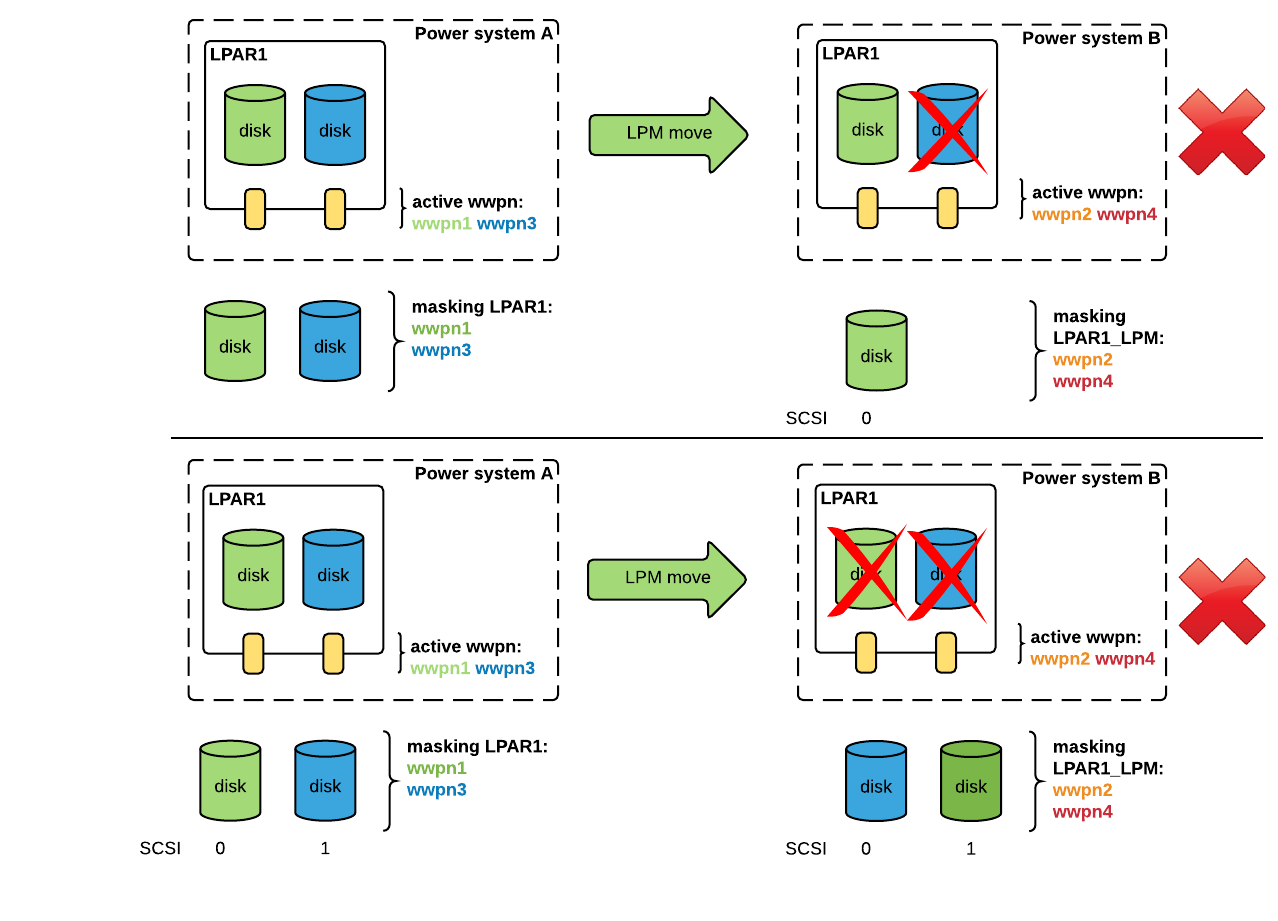
Defining two hosts at storage level works but if the configuration is not identical, the system can be missing disks after an LPM move.
It happens when:
disks are missing in LPM host masking
disks doesn’t have the same scsi id in both host masking.
Recommendation: define only one host at storage level with all wwpns or use san disks level validation(available with vios 2.2.4.10 and above).
SAN disk level validation
Before VIOS 2.2.4(Dec 2015), LPM validation was only validating if the inactive wwpn was able to connect on the same storage port than the active wwpn on each virtual fibre channel adapter.
If host mapping was not exactly the same for the inactive wwpn, problems would arise.
If it’s not possible to ensure the zoning and mapping recommendations are applied, use disk level validation. The validation will take more time but will ensure all disks are visible on the target system.
It need to be enabled on all source vios :
chdev -dev vioslpm0 -attr src_lun_val=on